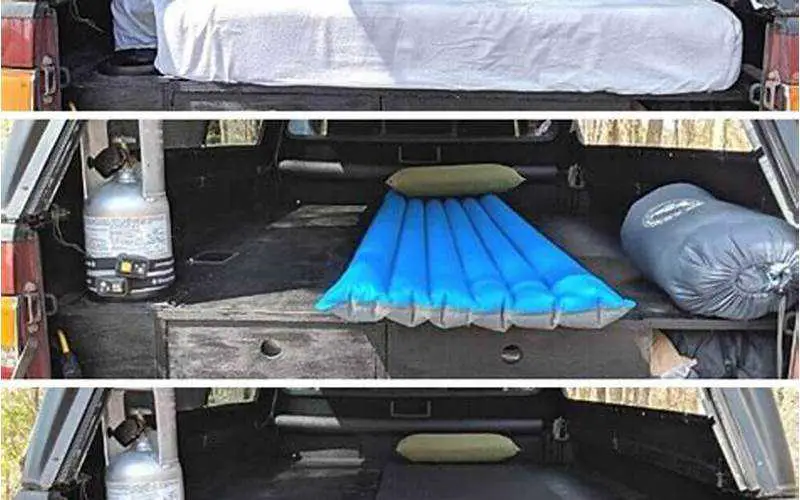
 Source: bing.com
Source: bing.com
Introduction
Hello, Truck Owner! Are you planning to transport a mattress in your truck bed? Strapping it securely is essential to ensure it doesn’t shift or get damaged during the journey. In this article, we will guide you through the process of properly securing your mattress to your truck bed. Let’s dive in!
The Importance of Properly Strapping Your Mattress
? Ensuring Safety: Strapping your mattress securely prevents it from becoming a hazardous object that could potentially cause accidents or harm during transportation.
? Protecting Your Mattress: Properly securing your mattress will prevent it from getting damaged or dirty. This will help maintain its quality and prolong its lifespan.
? Smooth Transportation: A well-strapped mattress will not shift or move around during transit, providing a smoother and more comfortable ride for you and your truck.
?️ Weather Protection: By strapping your mattress tightly, you can shield it from rain, wind, and other environmental factors that may cause damage.
? Cost Savings: Taking the necessary precautions to secure your mattress can save you money in the long run. It eliminates the need for potential repairs or replacements due to negligence.
❌ Potential Weaknesses: While strapping a mattress to a truck bed has numerous benefits, it’s important to be aware of potential weaknesses in the process. Let’s explore them further.
Weaknesses of Strapping a Mattress to a Truck Bed
1️⃣ Insufficient Straps: Using inadequate or worn-out straps can lead to instability and potential movement of the mattress during transportation.
2️⃣ Incorrect Placement: Placing the mattress in the wrong position on the truck bed, or not aligning it properly, can cause imbalance and instability.
3️⃣ Inadequate Protection: Failing to adequately protect the mattress from external elements may result in damage caused by rain, wind, dust, or debris.
4️⃣ Insufficient Tension: Loose straps can lead to the mattress shifting or sliding, potentially causing accidents or damage to your truck bed.
5️⃣ Negligence in Checking: Not regularly inspecting the straps during transportation can lead to loosening or weakening, compromising the security of the mattress.
6️⃣ Inadequate Padding: Lack of proper padding between the mattress and the truck bed may result in friction, leading to wear and tear or potential damage.
7️⃣ Overlooking Weight Distribution: Improper weight distribution can affect the stability and balance of your truck, potentially causing handling issues or accidents.
How to Strap Your Mattress to a Truck Bed
| Step | Description |
|---|---|
| 1 | Prepare the necessary equipment, including straps, padding, and protective covers. |
| 2 | Position the mattress on the truck bed, ensuring it is centered and aligned correctly. |
| 3 | Place padding between the mattress and the truck bed to prevent friction and potential damage. |
| 4 | Secure the mattress using heavy-duty straps, ensuring they are tightened securely. |
| 5 | Double-check the tension of the straps and make any necessary adjustments. |
| 6 | Cover the mattress with a protective cover to shield it from external elements. |
| 7 | Inspect the straps periodically during transportation to ensure they remain tight and secure. |
Frequently Asked Questions (FAQs)
1. Can I use regular ropes instead of straps?
Using ropes instead of straps is not recommended as they may not provide sufficient tension and security for your mattress. It’s best to use heavy-duty straps specifically designed for this purpose.
2. Should I remove the box spring before securing the mattress?
It is generally recommended to remove the box spring before strapping the mattress to ensure a more secure and stable transportation.
3. How many straps do I need to securely strap a mattress?
The number of straps required depends on the size and weight of the mattress. As a general guideline, using at least four straps evenly distributed is recommended for optimal security.
4. Can I transport a mattress vertically?
Transporting a mattress vertically is not recommended as it may lead to instability and damage. It’s best to transport it horizontally to maintain balance and stability.
5. What if my truck bed doesn’t have anchor points?
If your truck bed doesn’t have built-in anchor points, you can use tie-down anchors or secure the straps to sturdy points within the truck bed using proper attachments.
6. Should I use bungee cords in addition to straps?
Bungee cords are not recommended as the sole method of securing a mattress. They are better suited for lighter items and may not provide sufficient tension and stability for a mattress.
7. Can I transport a mattress without a protective cover?
While using a protective cover is not mandatory, it is highly recommended to shield your mattress from potential damage caused by external elements during transportation.
Conclusion
? Now that you are equipped with the knowledge of how to properly strap a mattress to your truck bed, you can transport it safely and securely. Remember to follow each step diligently, ensuring the mattress is well-protected and the straps are tight and secure. By taking these precautions, you can enjoy a smooth and worry-free journey while preserving the quality of your mattress.
? Your mattress’s safety and security are in your hands. Take action now and secure it properly for your next adventure!
? Disclaimer: The information provided in this article is for general guidance purposes only. It is important to assess your specific situation and follow local regulations and best practices when securing a mattress to a truck bed.
 MyVans Your Vehicle Solution
MyVans Your Vehicle Solution